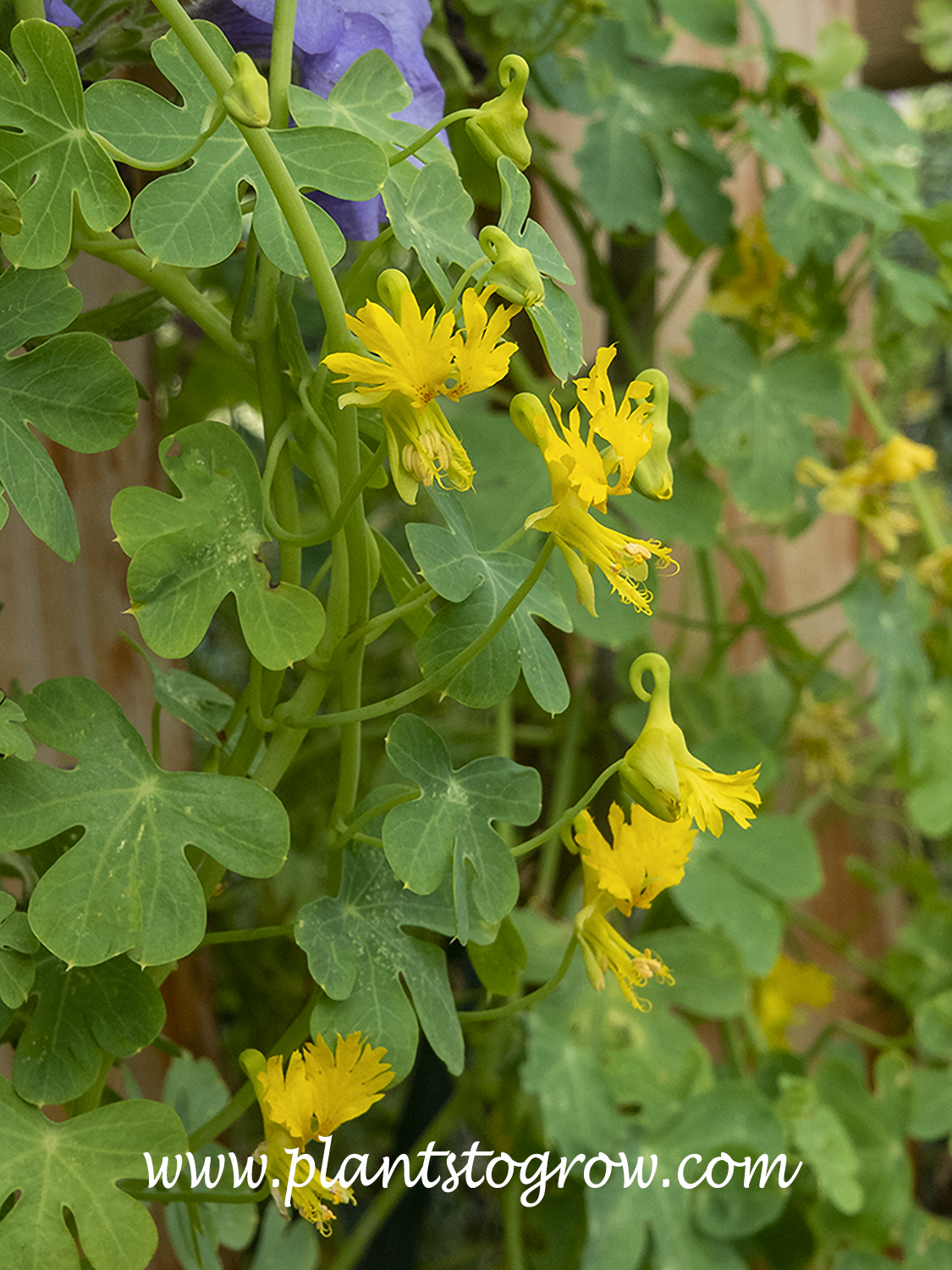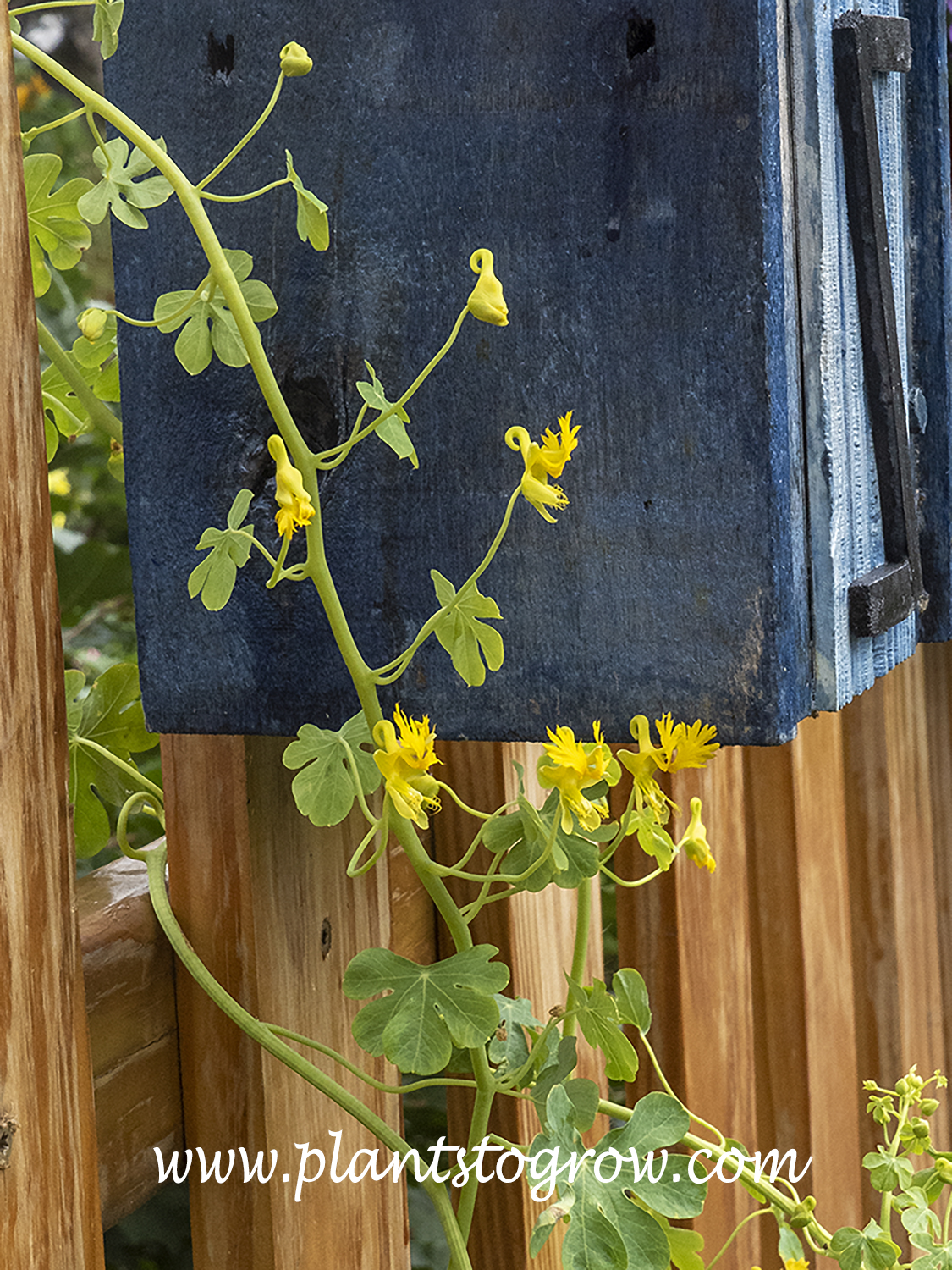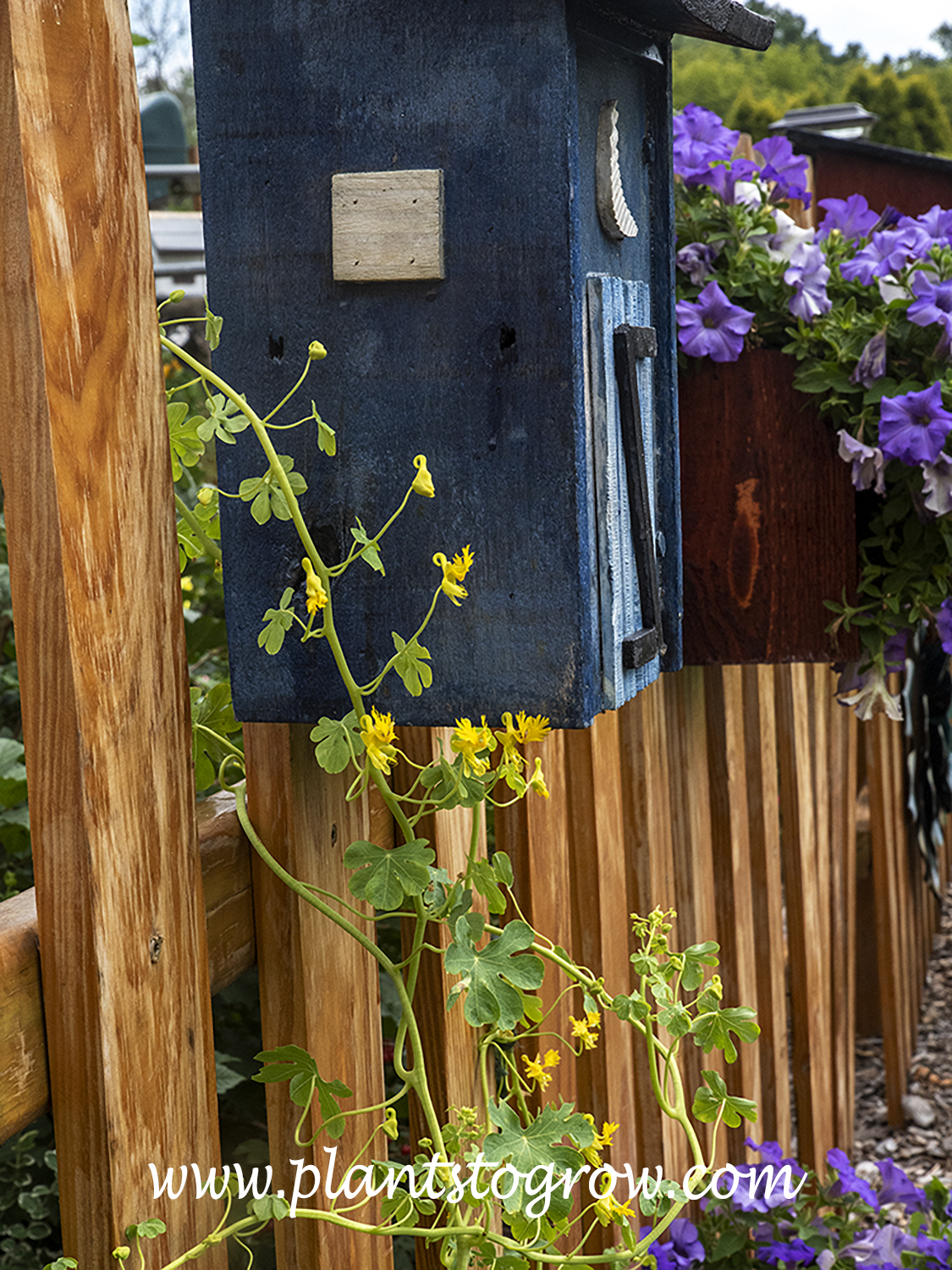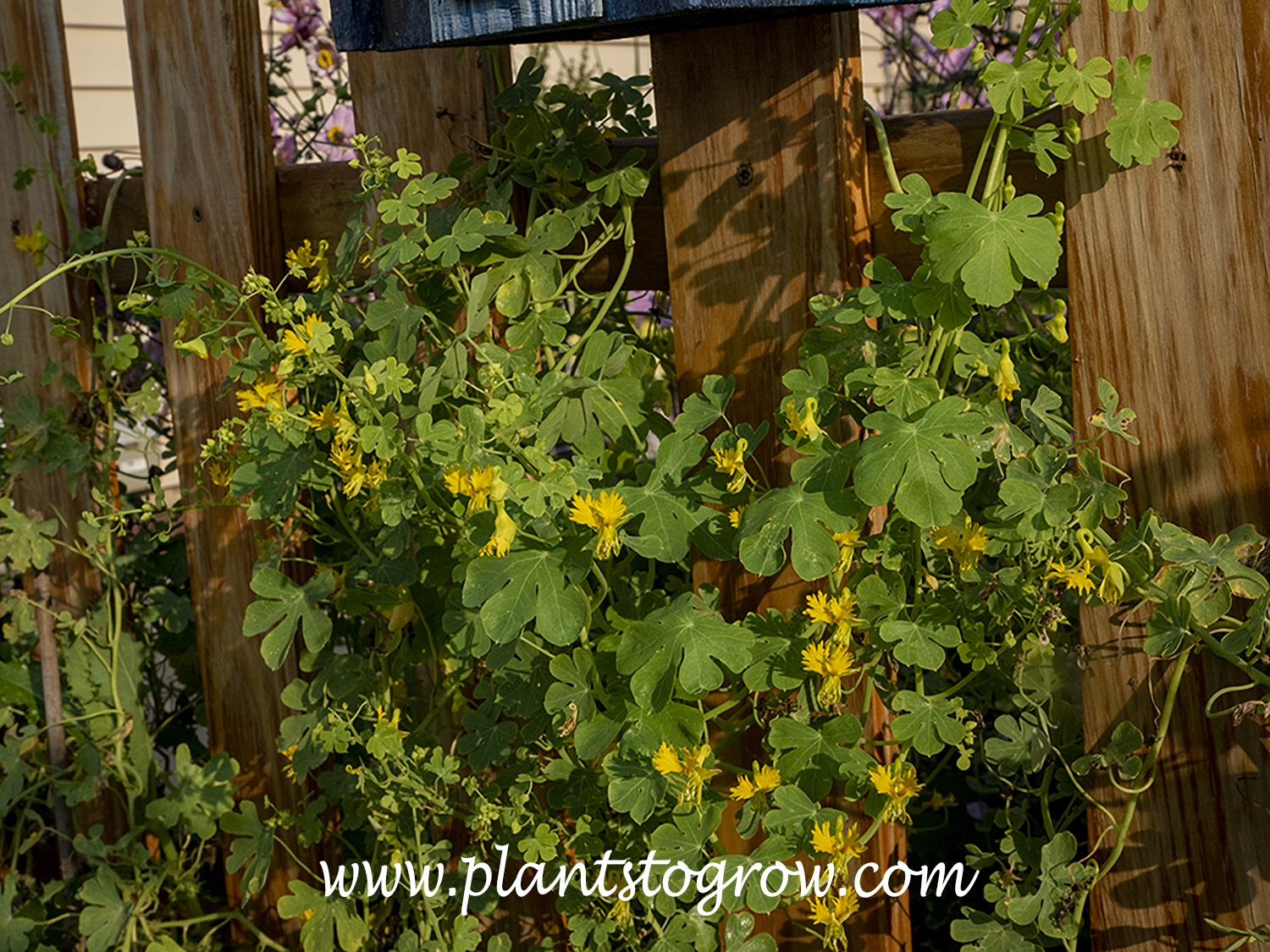| Description | Canary Creeper (Tropaeolum peregrinum) is an annual vine from Peru. The Canary yellow unusual-shaped flowers are shaped like the wings of a canary hence the common names. |
|---|---|
| Pronunciation | (troo-PEE-oo-lum) |
| Plant Type | Annuals, Vines, Site author's observations |
| Sunlight | full |
| Moisture | average |
| Soil & Site | average |
| Temperature | prefers cooler. frost-sensitive |
| Flowers | two upper petals that are cut looking as fringed, 3 lower petals small and thin, bright sun-kissed yellow to pale, creamy tones, |
| Leaves | green, generally 5 lobed |
| Stems | twinning tangles vine |
| Dimensions | up to 8 feet, mine reached about 6 |
| Maintenance | needs to be deadheaded constantly, needs a supporting structure |
| Propagation | albeit I only grew this from seed once I had fair germination |
| Native Site | Native to Ecuador and Peru and was discovered in the early 1800s. |
| Misc Facts | They were first introduced in 1810. One of the earliest American references was in 1839 by Buist. AKA: Canary Creeper, Canary Bird Flower, Canary Bird Vine, Canary nasturtium, Tropaeolum canariensis |
| Author's Notes | Canary Creeper forms very tangled vines. I needed to direct them, or they almost strangled themself. |
| Notes & Reference | #108-Restoring American Gardens (Denise Wiles Adams), #150- Armitage's Vines and Climbers (Alan Armitage), Home stratosphere (www.homestratosphere.com/types-nasturtium-flowers/) |

Cart





